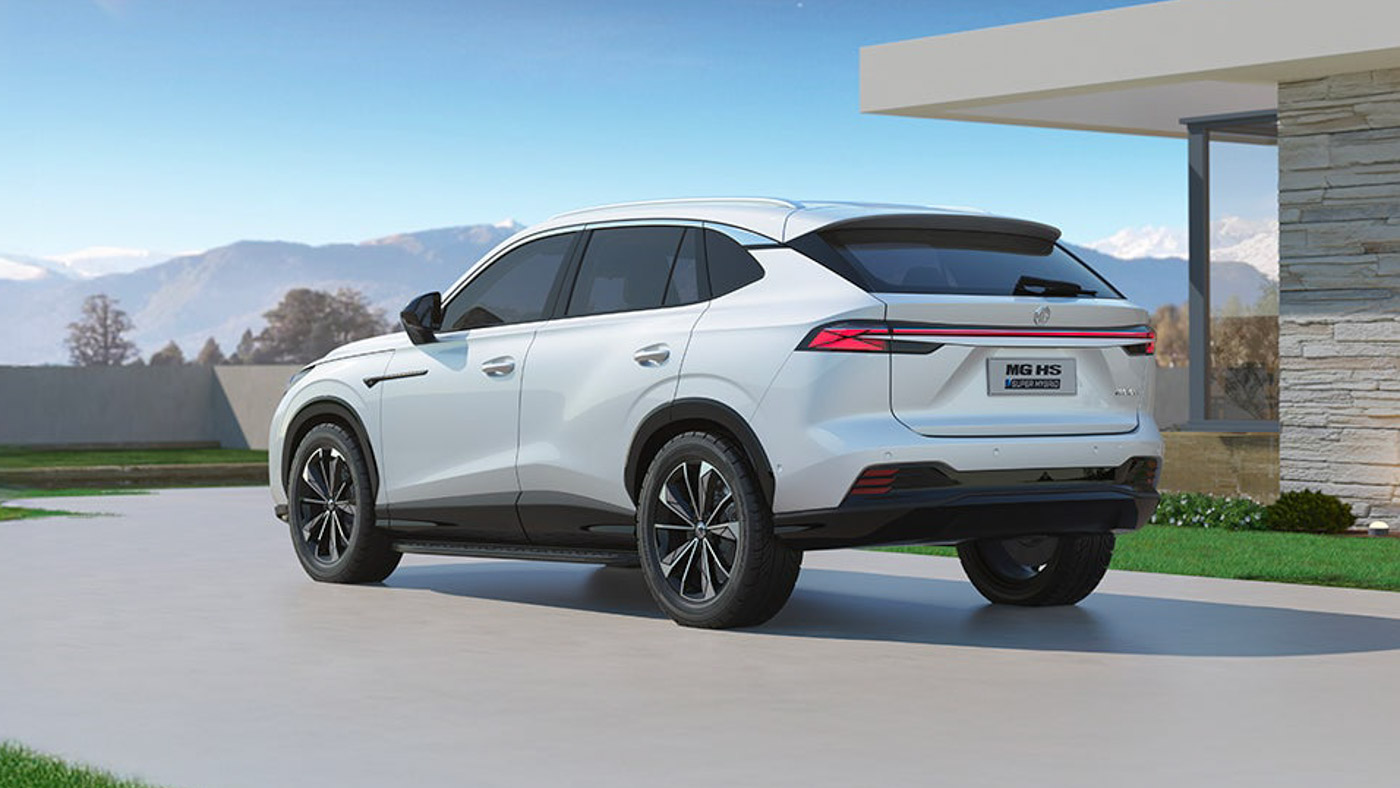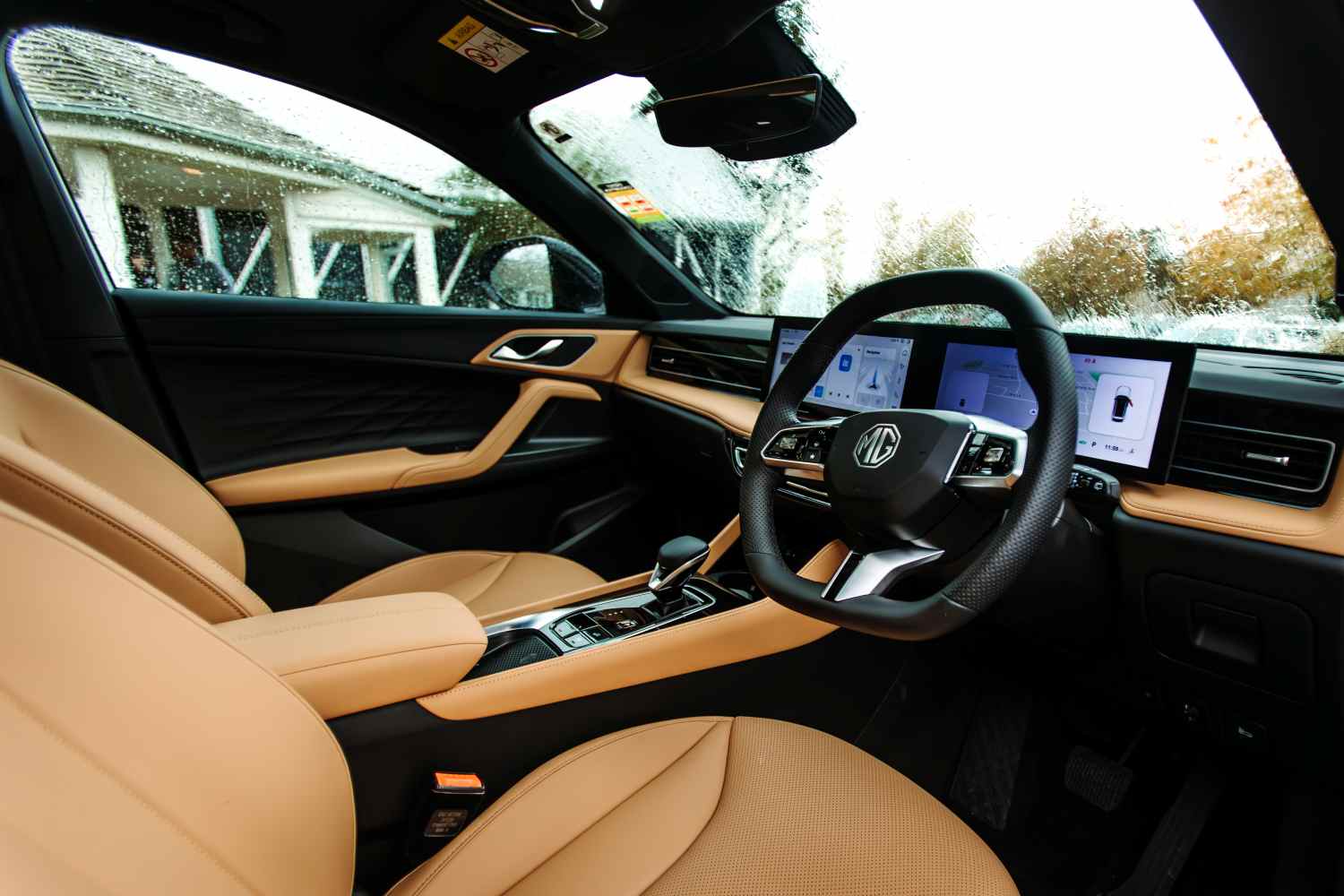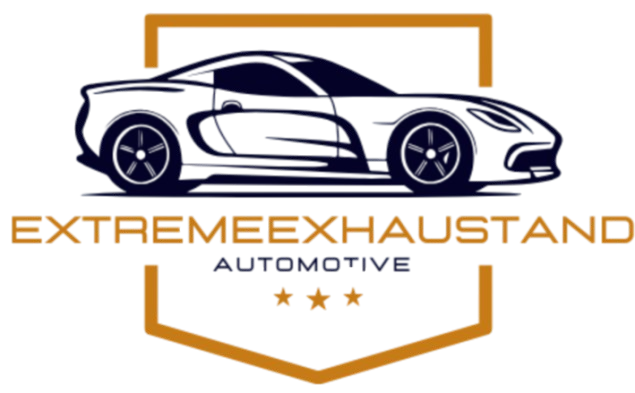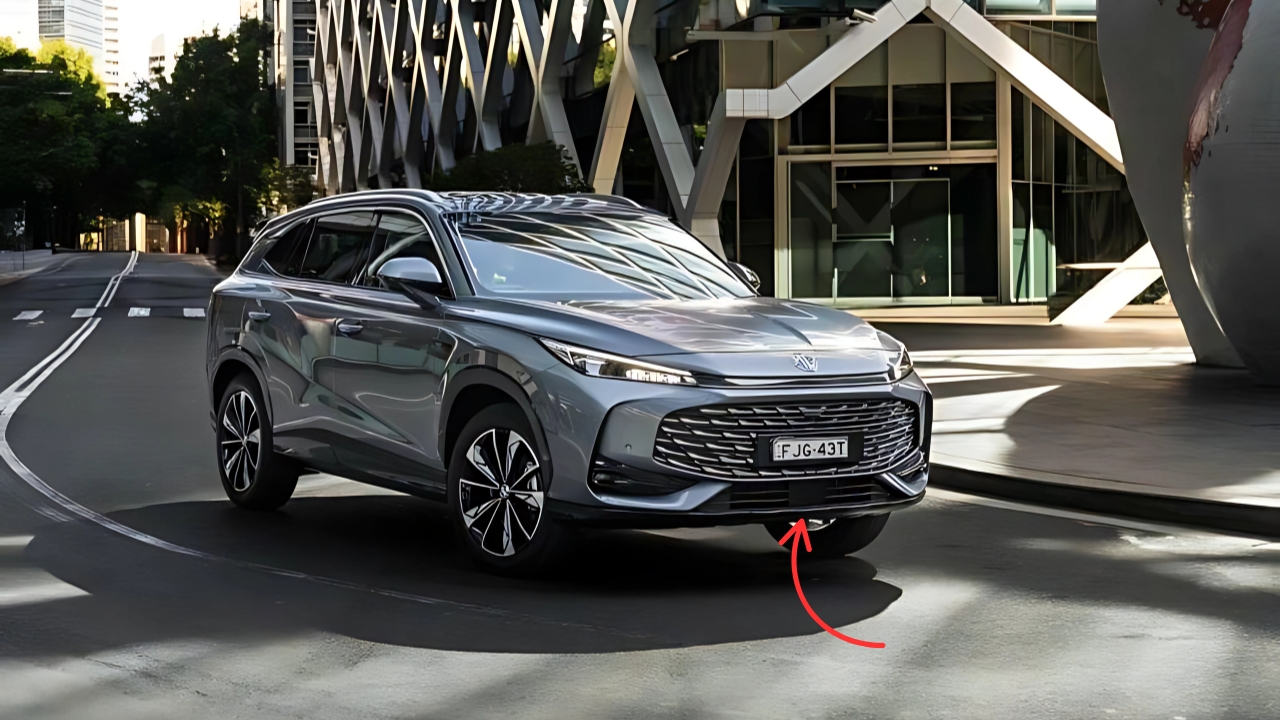MG HS Super Hybrid : The Australian automotive landscape is experiencing significant shifts as 2025 unfolds, with exciting new arrivals and major brand transformations reshaping the SUV market.
The most notable developments include MG’s introduction of their highly anticipated HS Super Hybrid plug-in SUV and the official farewell to the SsangYong nameplate after nearly three decades of Australian presence.
MG HS Super Hybrid: A New Era of Electrification
MG Motor Australia has officially confirmed pricing and specifications for their groundbreaking HS Super Hybrid, marking a pivotal moment in the brand’s electrification strategy.
The plug-in hybrid version of the second-generation MG HS, tuned specifically for Australian driving habits, will arrive in showrooms this September with pricing starting from $52,990 drive-away for the Excite trim and $55,990 drive-away for the Essence variant.
This represents a $16,000 premium over the equivalent HS 1.5T FWD petrol model, positioning the Super Hybrid as a serious contender in Australia’s increasingly competitive mid-size SUV segment. The timing couldn’t be more strategic, as the vehicle prepares to challenge established players including the upcoming next-generation Toyota RAV4, which will feature PHEV power for the first time in the Australian market.
Advanced Hybrid Technology

MG Australia has coined the term ‘Super Hybrid’ for its new PHEV models that have been tailored specifically for the Australian market. The HS Super Hybrid distinguishes itself from conventional plug-in hybrids through its intelligent power management system, which has been calibrated to prioritize efficiency over pure electric driving in typical Australian conditions.
The drivetrain’s software has been tailored to act more like a conventional hybrid with a long-range battery, rather than prioritising EV mode like most PHEVs. This approach addresses a common criticism of traditional PHEVs, where drivers often struggle to maximize the electric driving benefits in real-world conditions.
The powertrain centers around a 1.5-litre turbocharged PHEV system largely shared with the equivalent HS Plug-in Hybrid sold in the UK, featuring a substantial 24.7kWh lithium iron phosphate (LFP) battery pack. This setup enables MG Australia’s promise of hyper-miler combined driving range of over 1000km on a full charge and tank of fuel.
Performance and Efficiency Metrics
The performance credentials of the HS Super Hybrid are impressive for a family-focused SUV. MG quotes a 0-100km/h acceleration time of 6.8 seconds, and combined fuel consumption of “under 5.0L/100km in real-world driving conditions” when its useable EV range is depleted. These figures position it competitively against rivals while maintaining the practical benefits that Australian families demand.
The front-wheel-drive configuration keeps complexity and costs manageable while delivering adequate performance for most driving scenarios. The “integrated two-speed ratio transmission” simulates a nine-speed automatic, shifting seamlessly between the turbocharged petrol engine and the “G3” water-cooled traction motor.
Market Positioning and Competition
Currently, MG holds just 2.0 per cent of the mainstream medium SUV segment through March 31, paling in comparison to the Toyota RAV4’s commanding 23.9 per cent share or even the Mitsubishi Outlander’s 12.9 per cent share. However, the hybrid market momentum is building rapidly, with hybrid and PHEV sales continuing to grow with 47,014 units (up 34.8 per cent) and 13,711 units (up 286.4 per cent) registered year to date, respectively.
The HS Super Hybrid enters a market segment that’s becoming increasingly crowded with electrified options. Beyond the RAV4 Hybrid and incoming RAV4 PHEV, it will compete against established players like the Mitsubishi Outlander PHEV, and emerging Chinese rivals such as the BYD Sealion 6.
SsangYong’s Transformation: End of an Era
While MG celebrates new beginnings, another significant chapter in Australian automotive history concludes as KGM SsangYong officially becomes KGM Australia from June 1, 2025, formally ending the use of the SsangYong name in the local market after decades of presence.
This marks the first time the SsangYong name will be missing from local showrooms since the Mercedes-Benz-powered SsangYong Musso SUV was introduced in 1997. The transformation represents more than just a name change; it symbolizes the brand’s evolution under new ownership and strategic direction.
The Rebrand Journey
The rebrand began in 2022 in the company’s South Korea home market after a majority stake in the automaker was purchased by KG Group. Australia’s transition has been more gradual than other markets, with the local operation initially adopting the hybrid “KGM SsangYong” name in September 2024 before making the complete switch to simply “KGM Australia.”
The company emphasizes that what hasn’t changed is their focus on producing quality built SUVs and utes at a fair price, backed by a legendary seven year unlimited kilometre warranty which includes commercial use. This continuity message aims to reassure existing customers and dealers that the rebrand represents evolution rather than revolution.
New Identity and Direction
The company will introduce a refreshed logo and the new slogan, “KOREAN BUILT TO LAST,” across its branding. This messaging strategy clearly positions KGM as a proudly Korean manufacturer, distinguishing it from the growing number of Chinese automotive brands entering the Australian market.
The rebrand coincides with the unveiling of the MY26 KGM Actyon, a new SUV that will be the first vehicle fully developed and designed under the KGM brand. The Actyon nameplate has historical significance for the brand, having been used previously on models sold in Australia until 2011.
Market Dynamics and Consumer Impact

The simultaneous arrival of the MG HS Super Hybrid and departure of the SsangYong name reflects broader trends reshaping Australia’s automotive landscape. The electrification push continues accelerating, driven by both government incentives and changing consumer preferences, while brand consolidation and transformation become increasingly common.
The Hybrid Revolution
Australia’s hybrid adoption has reached a tipping point, with monthly sales figures consistently demonstrating consumer appetite for electrified vehicles. The success of models like the Toyota RAV4 Hybrid has proven that Australian buyers are ready to embrace hybrid technology when it offers tangible benefits in fuel efficiency and running costs.
MG’s “Super Hybrid” approach of optimizing the PHEV system for local driving conditions rather than following overseas market configurations demonstrates increasing localization sophistication among Chinese-owned brands operating in Australia. This attention to market-specific tuning could prove crucial in winning over traditionally conservative Australian SUV buyers.
Brand Evolution in a Competitive Market
KGM SsangYong represents a brand trying to reinvent itself while also reminding customers that it’s been around a long time, having celebrated 70 years of making cars in 2024. The challenge lies in leveraging this heritage while modernizing the brand image to compete effectively against both established Japanese and Korean rivals and emerging Chinese competitors.
The timing of both developments highlights how rapidly the Australian automotive market is evolving. Established players must continuously innovate to maintain relevance, while newer entrants leverage advanced technology and competitive pricing to gain market share.
Future Implications and Industry Outlook
Electrification Acceleration
The MG HS Super Hybrid launch represents just the beginning of a broader electrification wave. MG’s local division has also confirmed the HS Hybrid+ will arrive in Australia during the second half of 2025, powered by a 165kW/340Nm petrol-electric hybrid system achieving combined fuel economy of 5.2L/100km.
This dual-pronged hybrid strategy allows MG to capture different customer segments, with the Super Hybrid targeting buyers seeking maximum efficiency and electric driving capability, while the Hybrid+ appeals to those wanting electrification benefits without plug-in complexity.
Warranty and Service Considerations
MG Motor Australia has confirmed the Super Hybrid will be backed by the Chinese brand’s 10-year/250,000km new vehicle warranty, and near-100-strong national dealership network. This extensive coverage provides crucial reassurance for buyers considering a relatively new technology from a brand still building mainstream recognition in Australia.
Similarly, KGM Australia maintains the same dealership network and continues offering their seven-year unlimited kilometre warranty which includes commercial use. These warranty commitments reflect both brands’ confidence in their products and recognition that Australian buyers value long-term support and protection.
Consumer Advice and Market Readiness
For Australian consumers considering their next SUV purchase, these developments present both opportunities and considerations. The MG HS Super Hybrid offers cutting-edge hybrid technology at competitive pricing, potentially delivering significant fuel savings for families with appropriate driving patterns.
The key to maximizing PHEV benefits lies in understanding driving habits and charging infrastructure access. Buyers with regular short-distance driving and home charging capability will extract maximum value from the Super Hybrid’s electric driving range, while those with primarily long-distance driving might find the conventional Hybrid+ more suitable.
For existing SsangYong owners, the brand transformation to KGM Australia shouldn’t impact day-to-day ownership experience. All owners will receive ongoing service and support from the same dealership network which continues to grow across Australia.
Frequently Asked Questions
What is the price difference between the MG HS Super Hybrid and regular HS?
The MG HS Super Hybrid starts from $52,990 drive-away for the Excite trim and $55,990 for the Essence variant, representing a $16,000 premium over the equivalent petrol HS 1.5T FWD models.
Will SsangYong owners be affected by the rebrand to KGM Australia?
No, existing SsangYong owners will continue receiving full service and warranty support from the same dealership network. The rebrand primarily affects marketing and new vehicle sales, not ongoing customer support for existing vehicles.
When will the MG HS Super Hybrid be available in Australian showrooms?
The MG HS Super Hybrid is scheduled to arrive in Australian showrooms in September 2025, with the HS Hybrid+ variant following in the second half of 2025.
The convergence of MG’s hybrid innovation and SsangYong’s brand evolution marks a significant moment in Australian automotive history. As the market continues embracing electrification and brand transformation becomes increasingly common, these developments highlight both the opportunities and challenges facing automotive manufacturers in Australia’s dynamic marketplace.
For consumers, the expanding choice of advanced, efficient vehicles represents the tangible benefits of this ongoing industry evolution.

